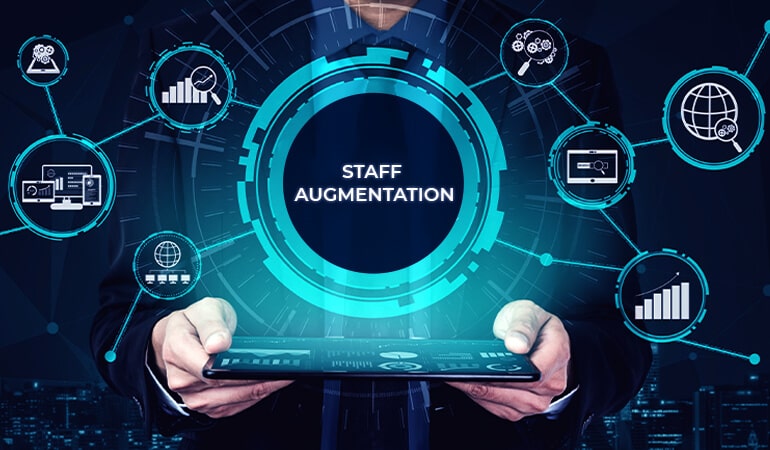The “Businessly” Advantage: What It Means for Your Enterprise
The term “Businessly” transcends mere corporate jargon; it embodies a profound philosophy that redefines how organizations operate, innovate, and thrive in an ever-evolving market. At its heart, “Businessly” represents a dedicated pursuit of efficiency, strategic alignment, and unwavering customer focus, all meticulously woven into the fabric of daily operations. It’s about moving beyond reactive problem-solving and instead adopting a proactive, integrated approach to every facet of your enterprise. This systematic methodology directly addresses common business pain points, such as stagnant growth, inefficient resource utilization, fragmented team efforts, and waning customer loyalty. By embracing a truly “Businessly” mindset, companies can transform these challenges into opportunities for unprecedented development and sustained competitive advantage. The transformative power of a “Businessly” approach lies in its ability to foster a culture of continuous improvement, where every decision and action contributes to a more robust, agile, and profitable entity. It’s not just about doing things right; it’s about doing the right things, right, every single time, with a clear, strategic vision guiding the way.
Pillars of a “Businessly” Framework: Essential Components for Growth
A robust “Businessly” framework is built upon several interconnected pillars, each crucial for fostering an environment of sustained growth and operational excellence. These foundational elements ensure that every aspect of your organization contributes harmoniously to overarching strategic objectives, driving genuine progress.
- Strategic Alignment: How “Businessly” Connects Vision to Execution Achieving true “Businessly” excellence necessitates a deep connection between your organizational vision and daily operational realities. This means setting clear, achievable “Businessly” goals that cascade down from the highest strategic levels to individual team objectives, ensuring everyone understands their role in the grand scheme. Effective resource allocation becomes paramount in a “Businessly” ecosystem, directing capital, talent, and time to initiatives that promise the greatest impact. Moreover, rigorous performance measurement is embedded within the “Businessly” approach, providing continuous feedback loops to assess progress and make necessary adjustments. This constant calibration ensures that efforts remain aligned with the strategic direction, preventing wasted resources and maximizing potential. Without this meticulous alignment, even the most innovative ideas can falter due to a lack of coordinated execution.
- Operational Efficiency: Optimizing Processes the “Businessly” Way At the core of “Businessly” operation lies an unyielding commitment to streamlining processes and eliminating inefficiencies. This often involves intelligently automating repetitive tasks with “Businessly” tools, freeing up valuable human capital for more strategic endeavors. The objective is to design workflows that are not only efficient but also intuitive, minimizing friction and maximizing “Businessly” productivity across all departments. By rigorously analyzing existing processes, identifying bottlenecks, and implementing targeted improvements, organizations can significantly reduce waste and optimize their output. This focus on operational excellence ensures that resources are utilized to their fullest potential, leading to tangible cost savings and enhanced performance. A truly “Businessly” operation is lean, agile, and constantly seeking better ways to achieve its objectives.
- Customer-Centricity: Building Lasting Relationships Through “Businessly” Engagement No business can thrive long-term without its customers, and a “Businessly” approach places the customer squarely at the center of all operations. This involves a deep commitment to understanding customer needs and preferences through a “Businessly” lens, gathering insights that inform product development, service delivery, and communication strategies. The aim is to consistently deliver exceptional “Businessly” experiences that not only meet but exceed customer expectations at every touchpoint. By fostering genuine connections and actively soliciting feedback, organizations can build enduring loyalty and transform satisfied customers into enthusiastic advocates. This dedication to customer satisfaction is not merely a department function but an ingrained “Businessly” philosophy that permeates every decision and interaction, leading to sustainable growth.
- Innovation & Adaptability: Future-Proofing Your Business with “Businessly” Agility In today’s fast-paced environment, static businesses are destined to fall behind; thus, a “Businessly” enterprise is inherently agile and innovative. This means actively embracing a culture of “Businessly” experimentation, where new ideas are encouraged, tested, and iterated upon, rather than stifled. The ability to respond swiftly and effectively to market shifts and emerging trends is a hallmark of “Businessly” flexibility, ensuring relevance and competitive edge. Leveraging cutting-edge technology for “Businessly” innovation becomes not an option but a necessity, allowing for rapid development and deployment of new solutions. This forward-thinking approach ensures that the business is always evolving, adapting, and seizing new opportunities, effectively future-proofing itself against unforeseen challenges.
Implementing “Businessly”: A Step-by-Step Guide for Transformation
Embarking on a “Businessly” transformation requires a structured approach, ensuring that changes are purposeful, integrated, and sustainable. It’s a journey that demands commitment and a clear roadmap for success.
- Assessment and Analysis: Pinpointing Your Current “Businessly” Standing The initial phase of any “Businessly” implementation involves a comprehensive assessment of your current operational landscape. This entails conducting a thorough “Businessly” audit, scrutinizing existing processes, technologies, and organizational structures to identify areas of inefficiency and potential improvement. The objective is to pinpoint precisely where your current practices deviate from ideal “Businessly” standards. By meticulously analyzing data and gathering insights from all levels of the organization, you can set accurate baselines for “Businessly” progress, providing a clear benchmark against which future improvements will be measured. This analytical rigor is fundamental to understanding your starting point and charting an effective course forward.
- Developing Your “Businessly” Blueprint: Crafting a Roadmap for Success Once the assessment is complete, the next critical step is to develop a detailed “Businessly” blueprint, serving as your strategic roadmap for transformation. This involves defining specific “Businessly” objectives that are measurable, achievable, relevant, and time-bound, providing clear targets for the transformation. Subsequently, outlining key “Businessly” strategies to achieve these objectives becomes paramount, detailing the actions and initiatives required. Critically, assigning clear responsibilities for “Businessly” implementation ensures accountability and fosters ownership throughout the organization. This blueprint acts as a living document, guiding every step of your “Businessly” journey.
- Phased Rollout: Gradual Integration of “Businessly” Principles Rather than attempting a drastic overhaul, a successful “Businessly” implementation often benefits from a phased rollout, allowing for controlled integration and learning. This typically involves starting with pilot “Businessly” projects in specific departments or areas, testing the new processes and technologies on a smaller scale. Gathering feedback from these initial phases is crucial for “Businessly” refinement, allowing for adjustments before wider deployment. As positive results emerge and lessons are learned, you can then progressively scale “Businessly” initiatives across other departments, ensuring a smoother and more effective transition. This iterative approach minimizes disruption and builds confidence in the new ways of working.
- Sustaining Momentum: Ensuring Long-Term “Businessly” Vibrancy Implementing “Businessly” principles is not a one-time event but an ongoing commitment to continuous improvement. Sustaining momentum requires continuous monitoring of “Businessly” performance against established KPIs, allowing for timely adjustments and course corrections. Regular “Businessly” training and development programs are essential to ensure that employees are equipped with the necessary skills and knowledge to embrace and champion the new approaches. Above all, cultivating a “Businessly” mindset throughout the organization is paramount; it’s about embedding the core principles into the organizational culture, making them an inherent part of how everyone operates daily. This commitment ensures the long-term vibrancy and enduring benefits of your “Businessly” transformation.
Measuring the Impact of “Businessly”: Quantifying Your Returns
The true value of adopting a “Businessly” approach lies in its measurable impact on your organization’s performance and bottom line. Quantifying these returns is essential for demonstrating value and securing continued buy-in.
- Key Performance Indicators (KPIs) for “Businessly” Success To accurately gauge the effectiveness of your “Businessly” initiatives, it’s imperative to establish clear and relevant Key Performance Indicators. These include financial metrics reflecting “Businessly” improvements, such as increased revenue, reduced operational costs, and improved profit margins. Simultaneously, tracking operational efficiency gains from “Businessly” adoption, such as faster processing times, reduced error rates, and optimized resource utilization, provides tangible evidence of progress. Furthermore, enhanced customer satisfaction through “Businessly” practices, measured by metrics like Net Promoter Score (NPS), customer retention rates, and service quality ratings, directly reflects the positive impact on your client base. A holistic set of KPIs offers a comprehensive view of your “Businessly” journey’s impact.
- Return on Investment (ROI) of “Businessly” Initiatives Calculating the Return on Investment (ROI) for your “Businessly” initiatives moves beyond mere qualitative observations, providing concrete financial justification for the efforts expended. This involves meticulously tracking the costs associated with implementing “Businessly” changes and comparing them against the quantifiable benefits achieved. A positive ROI validates the strategic decision to adopt a “Businessly” framework, demonstrating its tangible contribution to financial health. It’s a powerful metric for communicating value to stakeholders and securing further investment in optimization efforts. By illustrating a clear financial upside, the “Businessly” approach becomes undeniably attractive.
- The Ripple Effect of “Businessly” on Employee Morale and Culture Beyond the direct financial and operational benefits, the implementation of “Businessly” principles often creates a positive ripple effect on employee morale and overall organizational culture. When processes are streamlined, employees experience less frustration and more clarity in their roles, leading to increased job satisfaction. A “Businessly” environment fosters greater collaboration, empowerment, and a sense of collective purpose, as everyone understands their contribution to the larger goals. This cultural shift translates into a more engaged, productive, and resilient workforce, which, while harder to quantify, is an invaluable asset for any growing enterprise. A “Businessly” culture breeds sustained enthusiasm and shared commitment to excellence.
Overcoming Obstacles on Your “Businessly” Journey
While the path to becoming truly “Businessly” is immensely rewarding, it is not without its challenges. Proactively addressing these obstacles is vital for maintaining momentum and achieving desired outcomes.
Addressing resistance to Businessly change is perhaps the most common hurdle; people naturally resist new ways of working, often due to fear of the unknown or disruption to comfortable routines. Effective change management strategies, clear communication, and consistent reinforcement are crucial for overcoming this inertia. Navigating resource constraints in “Businessly” transformation also presents a significant challenge, as optimizing processes and adopting new technologies often requires initial investment in time, capital, and skilled personnel. Strategic planning and a phased approach can help manage these limitations effectively. Furthermore, maintaining “Businessly” focus amidst daily operations can be difficult, as urgent daily tasks often overshadow long-term strategic initiatives. Dedicated teams, clear objectives, and regular reviews are essential to keep the “Businessly” agenda at the forefront. Finally, developing effective strategies for continuous “Businessly” improvement ensures that the organization doesn’t rest on its laurels but constantly seeks new ways to enhance efficiency and effectiveness. This proactive approach to problem-solving and adaptation is a hallmark of truly “Businessly” organizations.
The Future is “Businessly”: Staying Ahead in a Dynamic Landscape
The trajectory of business evolution points unmistakably towards a future where “Businessly” principles are not just advantageous but imperative for survival. Staying ahead in an increasingly dynamic landscape demands foresight and adaptability. Emerging technologies, from advanced AI and machine learning to sophisticated data analytics and automation, are continually shaping the “Businessly” paradigm, offering unprecedented opportunities for optimization and innovation. The evolving role of leadership in a “Businessly” organization shifts from hierarchical control to facilitative guidance, empowering teams and fostering a culture of ownership and agility. Leaders must become champions of change, consistently advocating for and embodying the “Businessly” ethos. Anticipating future challenges and opportunities through a “Businessly” lens allows organizations to be proactive rather than reactive, positioning themselves to capitalize on emerging trends and mitigate potential risks. The enduring power of a “Businessly” approach for sustained growth lies in its inherent adaptability, enabling businesses to not only navigate but also excel in an ever-changing global marketplace. It’s about building a resilient, responsive, and ultimately thriving enterprise that is perpetually ready for what comes next.
Frequently Asked Questions About “Businessly”
- What distinguishes “Businessly” from traditional business approaches? “Businessly” differs from traditional approaches by emphasizing an integrated, holistic view of the entire organization, focusing on continuous optimization, strategic alignment, and customer-centricity across all functions, rather than siloed improvements. It’s about proactive transformation rather than reactive adjustments.
- Is “Businessly” only for large corporations? Absolutely not. While large corporations can certainly benefit, the principles of “Businessly” are universally applicable to businesses of all sizes, from startups to SMEs. The core concepts of efficiency, strategic focus, and customer satisfaction are essential for growth regardless of scale.
- How long does it take to see results from implementing “Businessly” principles? The timeline for seeing results from implementing “Businessly” principles varies depending on the size and complexity of the organization, as well as the specific initiatives undertaken. Some operational efficiencies can be observed within weeks or months, while larger cultural and strategic shifts may take a year or more to fully manifest.
- What are the first steps a small business can take towards becoming more “Businessly”? A small business can begin by conducting a simple internal audit of their current processes, identifying key bottlenecks, and prioritizing areas for improvement that align with their core business objectives. Focusing on one or two key areas, such as customer service or sales pipeline efficiency, can provide immediate tangible benefits.
- Can “Businessly” be applied to non-profit organizations? Yes, “Businessly” principles are highly relevant to non-profit organizations. They can significantly enhance operational efficiency, improve resource allocation, and ultimately strengthen the organization’s ability to achieve its mission and serve its beneficiaries more effectively.
- How does technology integrate with the “Businessly” framework? Technology is a crucial enabler of the “Businessly” framework. It provides the tools for automation, data analysis, communication, and process optimization, allowing organizations to implement “Businessly” strategies more effectively and scale their operations.
- What resources are available for further learning about “Businessly”? Numerous resources are available for further learning about “Businessly,” including professional development courses, industry publications, specialized consulting firms, and online communities dedicated to business optimization and strategic management. Exploring these avenues can provide deeper insights and practical guidance.











